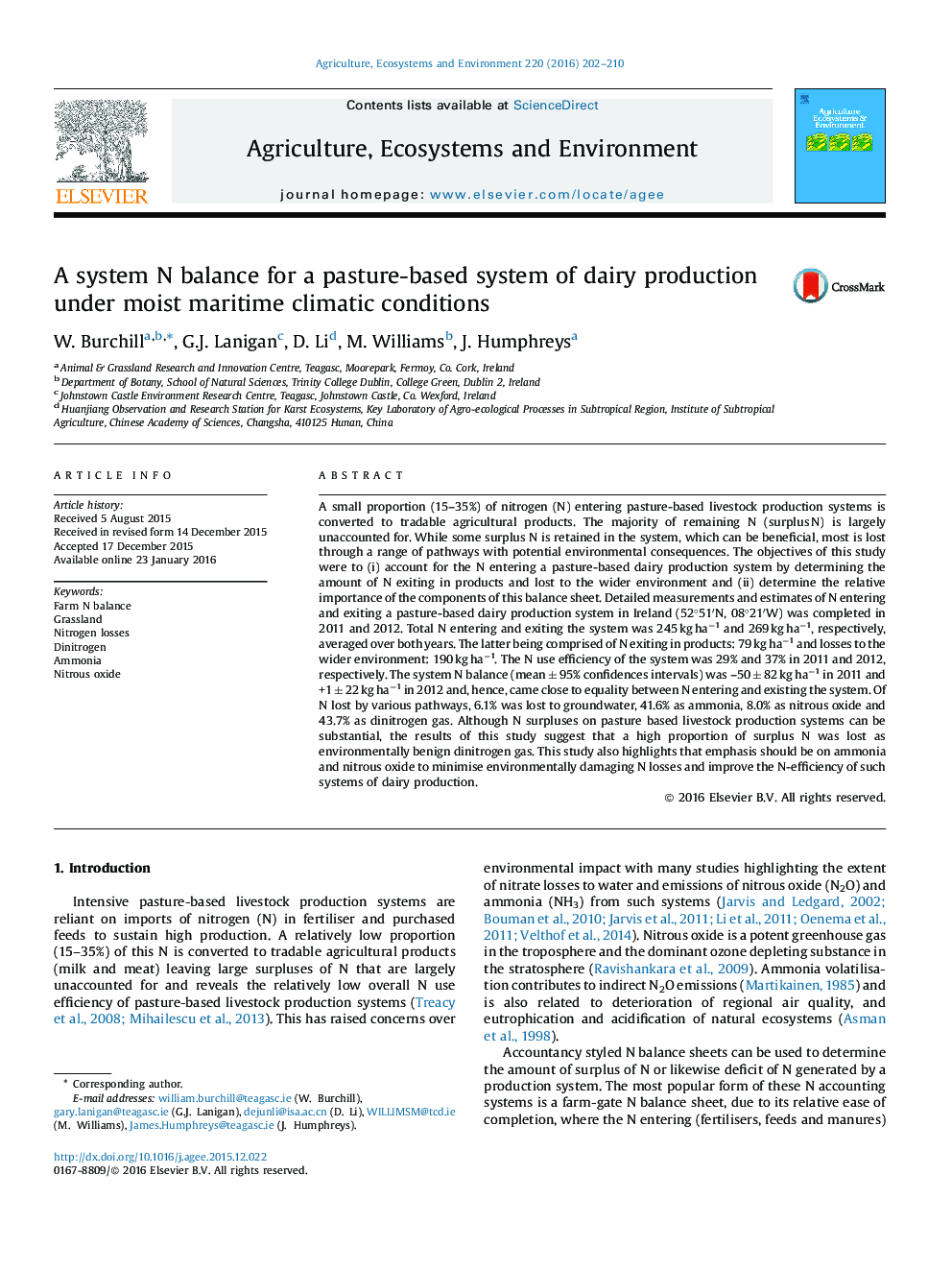| Article ID | Journal | Published Year | Pages | File Type |
|---|---|---|---|---|
| 8487502 | Agriculture, Ecosystems & Environment | 2016 | 9 Pages |
Abstract
A small proportion (15-35%) of nitrogen (N) entering pasture-based livestock production systems is converted to tradable agricultural products. The majority of remaining N (surplus N) is largely unaccounted for. While some surplus N is retained in the system, which can be beneficial, most is lost through a range of pathways with potential environmental consequences. The objectives of this study were to (i) account for the N entering a pasture-based dairy production system by determining the amount of N exiting in products and lost to the wider environment and (ii) determine the relative importance of the components of this balance sheet. Detailed measurements and estimates of N entering and exiting a pasture-based dairy production system in Ireland (52°51â²N, 08°21â²W) was completed in 2011 and 2012. Total N entering and exiting the system was 245 kg haâ1 and 269 kg haâ1, respectively, averaged over both years. The latter being comprised of N exiting in products: 79 kg haâ1 and losses to the wider environment: 190 kg haâ1. The N use efficiency of the system was 29% and 37% in 2011 and 2012, respectively. The system N balance (mean ± 95% confidences intervals) was -50 ± 82 kg haâ1 in 2011 and +1 ± 22 kg haâ1 in 2012 and, hence, came close to equality between N entering and existing the system. Of N lost by various pathways, 6.1% was lost to groundwater, 41.6% as ammonia, 8.0% as nitrous oxide and 43.7% as dinitrogen gas. Although N surpluses on pasture based livestock production systems can be substantial, the results of this study suggest that a high proportion of surplus N was lost as environmentally benign dinitrogen gas. This study also highlights that emphasis should be on ammonia and nitrous oxide to minimise environmentally damaging N losses and improve the N-efficiency of such systems of dairy production.
Related Topics
Life Sciences
Agricultural and Biological Sciences
Agronomy and Crop Science
Authors
W. Burchill, G.J. Lanigan, D. Li, M. Williams, J. Humphreys,
